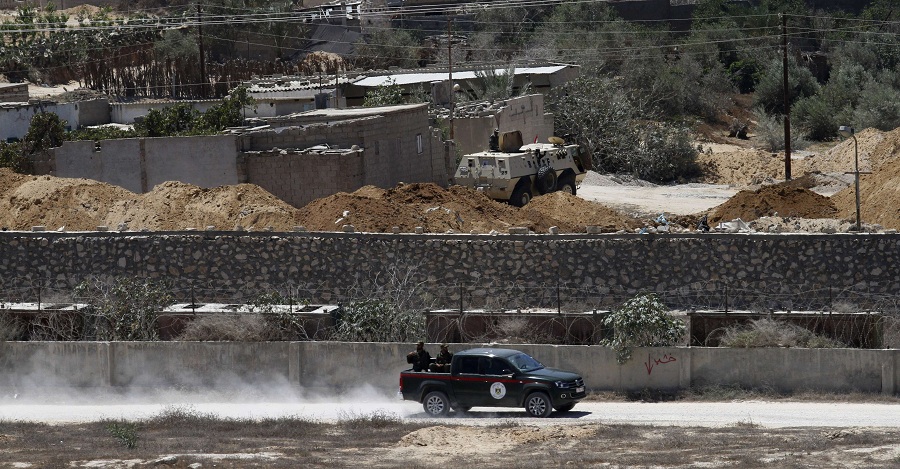At a time when there exists a very real possibility of eventual United States or Israeli military action against Iran’s nuclear infrastructure, it is important to focus on the potentially devastating impact of such action on the stability of the Persian Gulf, the already fragile situation in Iraq, and repercussions even farther a field. US military contingency plans for major strikes against Iran have been in existence for some time, judging from significant leaks in 2006. This information points to a robust campaign requiring more than 1,000 combat missions and cruise missile launches that could last a number of days. Such a campaign would resemble something closer to a full-scale air war against Iran than a “surgical strike. Iran’s nuclear infrastructure would not be the only target of such an effort. The US would doubtless also focus on eliminating much of Iran’s airpower and any retaliatory capabilities that could be used in the Gulf. Included would be most of the Iranian Air Force and much of Iran’s anti-aircraft defenses to clear the way for strikes on widely-dispersed nuclear targets. In addition, the large array of Iranian anti-ship missiles, Iran’s Kilo-Class submarines, Scud-C and ballistic missile assets, mine-laying capabilities, and even the Revolutionary Guards’ fleet of small boats trained in swarming tactics against combat vessels and commercial shipping would likely be struck. Despite the size of this effort, it would be impossible to take out all Iranian assets that could be used to retaliate in the first wave of strikes. Consequently, confronted with a “use or lose situation, Tehran might well be strongly motivated to strike back quickly with whatever assets had escaped destruction early in such an ambitious air campaign. Perhaps the worst-case scenario for the US and the Arab Gulf states would be an Israeli attack on Iran. In the “fog of war, and with attacks most likely to be conducted at night, Tehran could wrongly conclude that it had been hit by the US (or Israel with the assistance of the US). The latter would not be an altogether unreasonable assumption since the Israelis probably would have to fly over US-occupied Iraq with Washington’s consent in order to reach Iran with a reasonably effective strike package. The Israelis, however, would be relatively limited in the number of strikes they could carry out at such extreme range. As a result, Israeli attacks would largely be concentrated on nuclear-related targets, taking out only those portions of Iran’s air force and air defenses required to reach those targets. Therefore, key Iranian retaliatory capabilities that could be used in the Gulf would most likely be left virtually untouched. In this situation, stunned by such a blow and possibly uncertain as to the true identity of the attacker for many hours, Tehran would be well-positioned to hit back against US fleet units, US facilities in the Arab Gulf states, commercial shipping, or even petroleum-related targets on the other side of the Gulf, employing missiles, aircraft and naval assets. Consequently, in this scenario, before such attacks could be suppressed, substantial damage could be inflicted, including possible Iranian mining operations in the Strait of Hormuz. In any attack scenario, Tehran also would likely urge Hezbollah to restart military operations against Israel from southern Lebanon. In the event of a US attack, it could use pre-positioned covert assets to conduct terrorist operations against US interests throughout the Middle East and perhaps beyond. In the latter scenario, attempts also might be made by Iranian operatives to attack government and economic targets in the Gulf Cooperation Council states. Tehran probably would assume that most of the GCC states were complicit in any US attack. Another damaging retaliatory option open to Iran, most likely in response to a US attack, would be operations inside of Iraq. Indeed, the greater the damage to Iran’s potential for retaliation in the Gulf, the more Iraq would likely beckon as the most promising venue for Iranian payback. The Iranians could wreak havoc inside of an already unstable Iraq. They could work through surrogates or send literally hundreds of their own operatives and military personnel across a fairly porous border to attack American targets. Such activity would complicate still further US efforts to bring stability to Iraq. And even if the Iranians chose not to extend any military confrontation with the US into Iraq, many Iraqi Shias would be angered by a US or Israeli attack on Iran, injecting still more tension into Iraq’s deeply-troubled internal equation. Perhaps the worst consequence of a military campaign against Iran would be the absence of an endgame. Saddam Hussein moved militarily against Iran in 1980, a vengeful Iran refused to give in, and Iraq was trapped in an eight-year war. In a similar manner, military action against Iran by the US or Israel could initiate a prolonged crisis in the Gulf region, among other things threatening the flow of oil from the Gulf and driving up world oil prices considerably.
Wayne Whiteis a policy expert at the Middle East Policy Council in Washington DC. He is former deputy director of the Office of Near East and South Asian Analysis in the State Department’s Bureau of Intelligence and Research. This commentary first appeared at bitterlemons-international.org, an online newsletter publishing views of Middle Eastern and Islamic issues.

